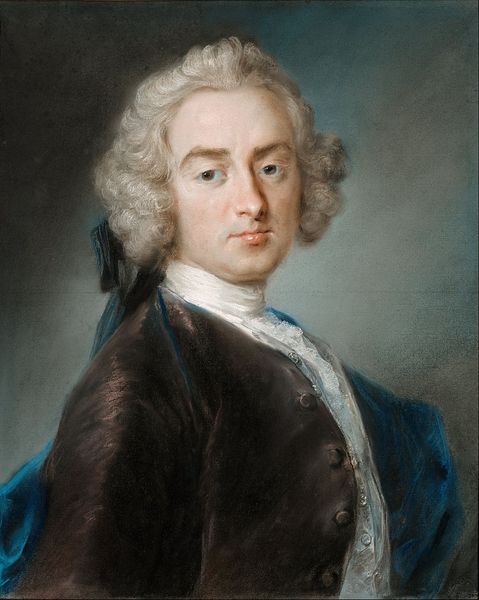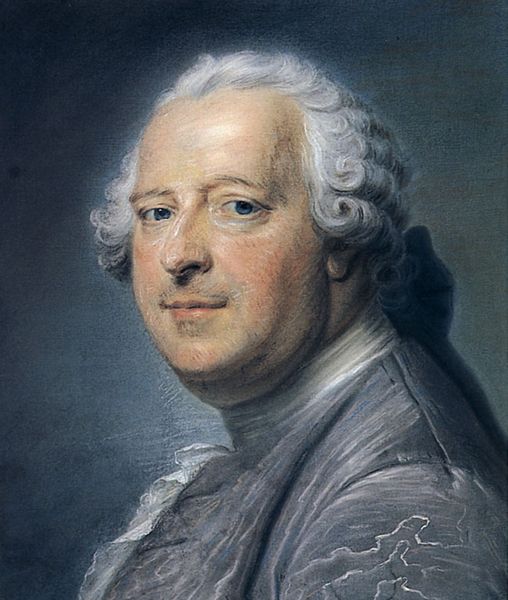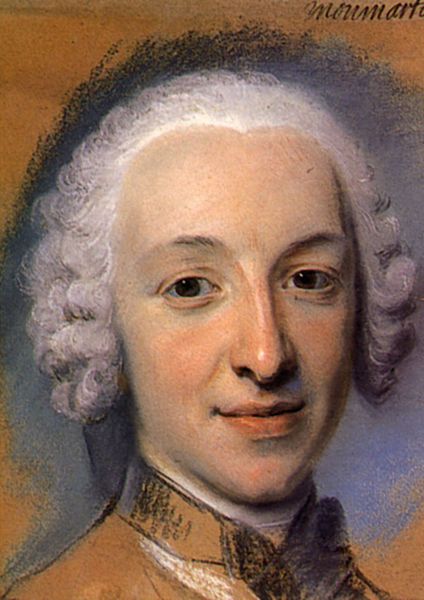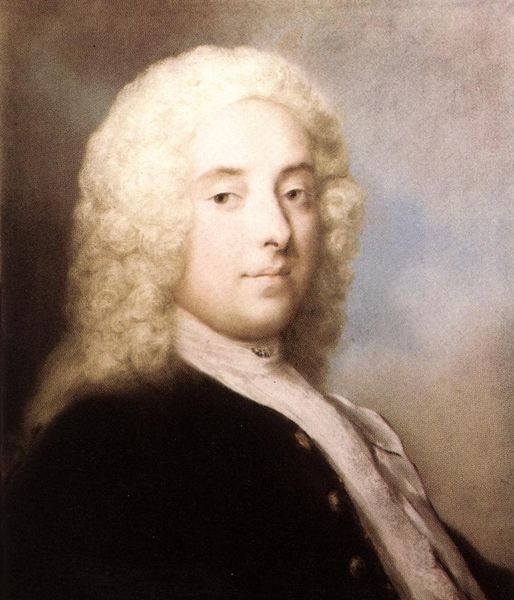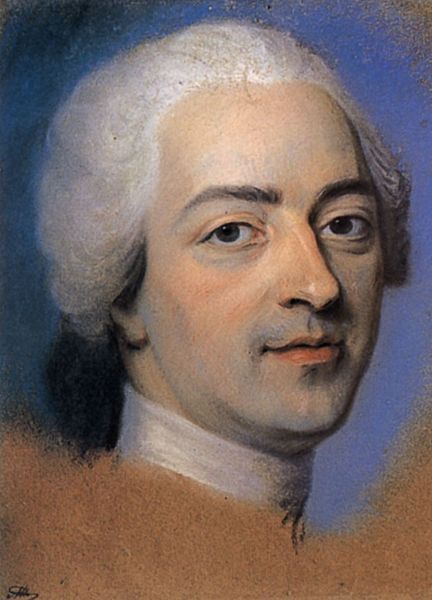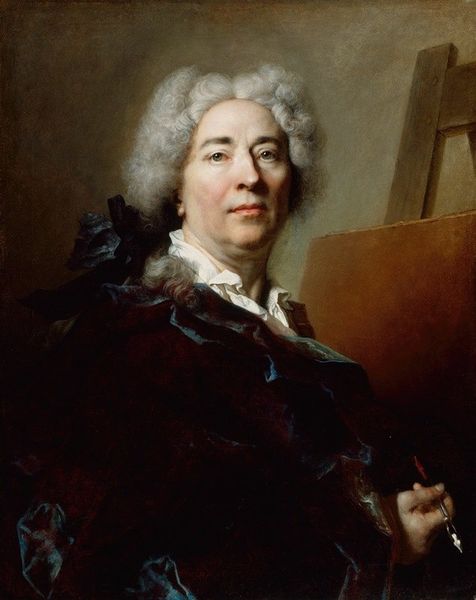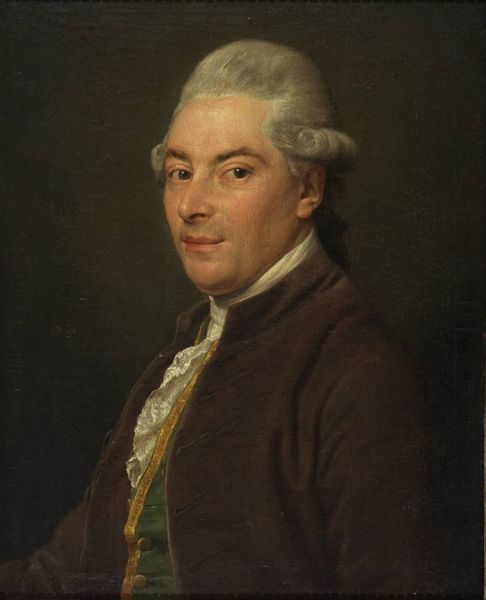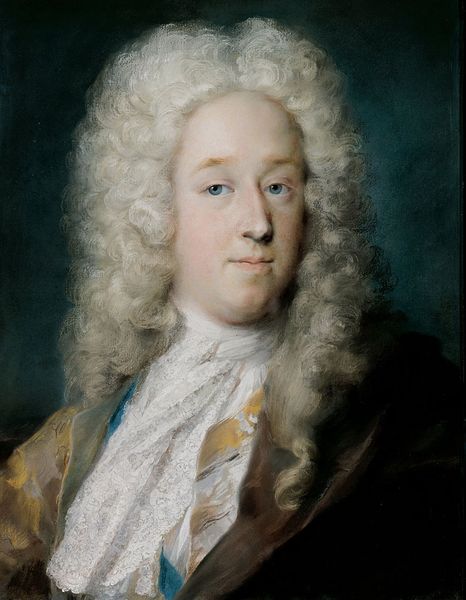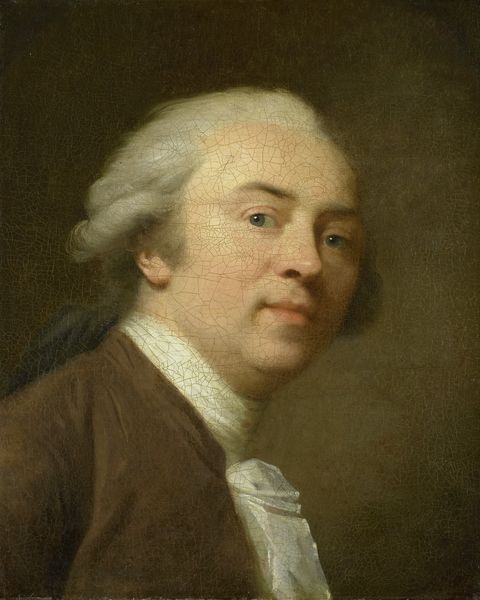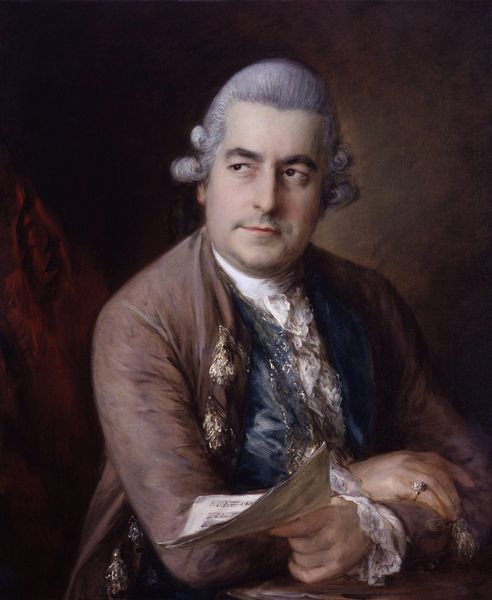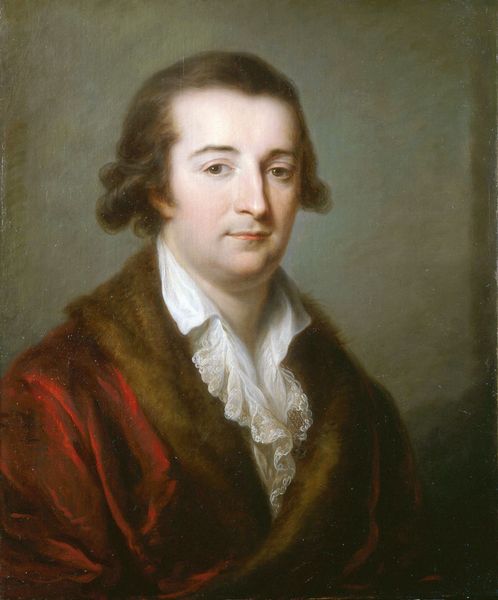
pastel
#
portrait
#
head
#
face
#
portrait image
#
portrait
#
portrait reference
#
male-portraits
#
portrait head and shoulder
#
animal drawing portrait
#
portrait drawing
#
pastel
#
facial portrait
#
forehead
#
portrait art
#
fine art portrait
#
rococo
#
digital portrait
Copyright: Public domain
Curator: Looking at this piece, the sitter’s eyes convey such a palpable sense of self-awareness, don’t you think? Editor: It’s striking. He's got an almost world-weary look about him. The artist, Maurice Quentin de La Tour, really captured something of his character. This is his portrait of Count Clement Wenceslaus of Saxony. Curator: De La Tour's portraits are really testaments to Rococo's embrace of personality, especially within aristocratic circles. The count’s gaze projects a sort of languid detachment, embodying a unique mixture of authority and vulnerability. What symbols might illuminate the dynamics of power at play in the late 18th century? Editor: It’s interesting, isn't it? It does capture that specific historical moment – the late 1700s and the winding down of the French ancien regime. It feels incredibly intimate, almost like a private moment captured, defying the usual bombast of aristocratic portraiture. The muted pastels definitely contribute to that softer tone. Curator: Absolutely. The artist captures subtle characterizations. Every choice holds cultural weight, speaking to both the individual portrayed and the epoch of this time period. It allows him to humanize what might otherwise have remained distant, purely symbolic figureheads. Editor: I completely agree. And perhaps it was a challenge to the visual language of the establishment? Commissioned art usually put more emphasis on status than likeness. It is a fascinating piece that captures a fleeting sense of individuality amid vast social changes. I wonder if its charm resides precisely in this intimate touch? Curator: Maybe. I find myself returning to those eyes, wondering how such an image serves not just to depict but to subtly shape perceptions. I imagine De La Tour wasn't simply making a likeness but actively crafting an identity. Editor: A carefully constructed narrative, definitely. Art becomes more than a mirror, it becomes an active participant in shaping history. It offers this lens through which we can view these power structures that art often conceals and reinforces. Curator: Yes, in decoding this piece, we glean some understanding of how these eras really shaped collective memory through singular images. It is something quite compelling about that, I believe. Editor: Absolutely. There's so much history layered beneath that refined exterior.
Comments
No comments
Be the first to comment and join the conversation on the ultimate creative platform.

